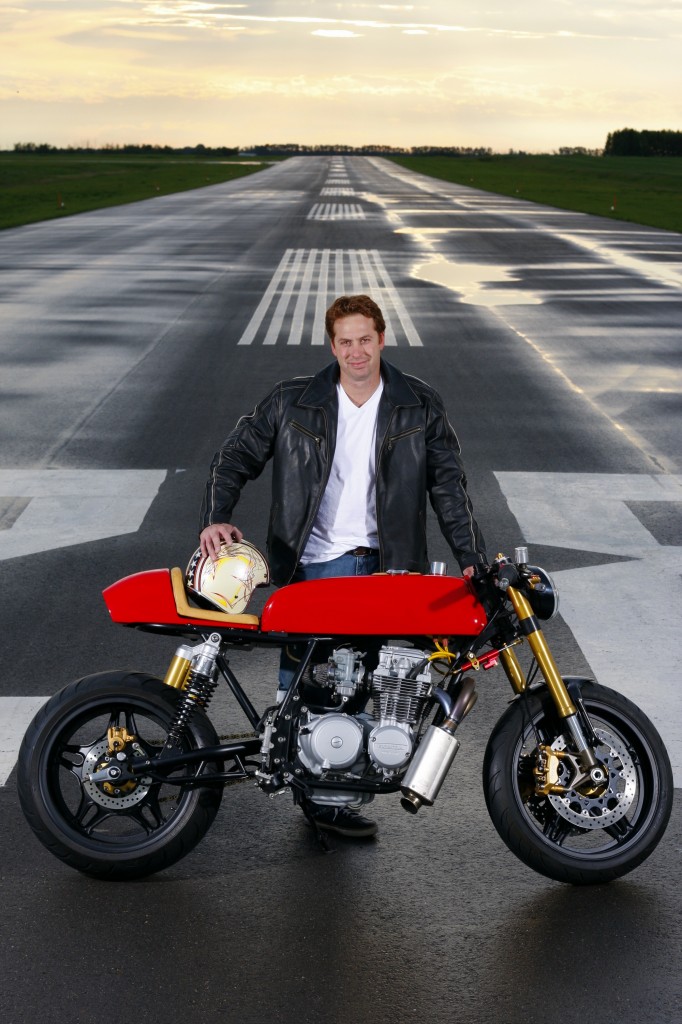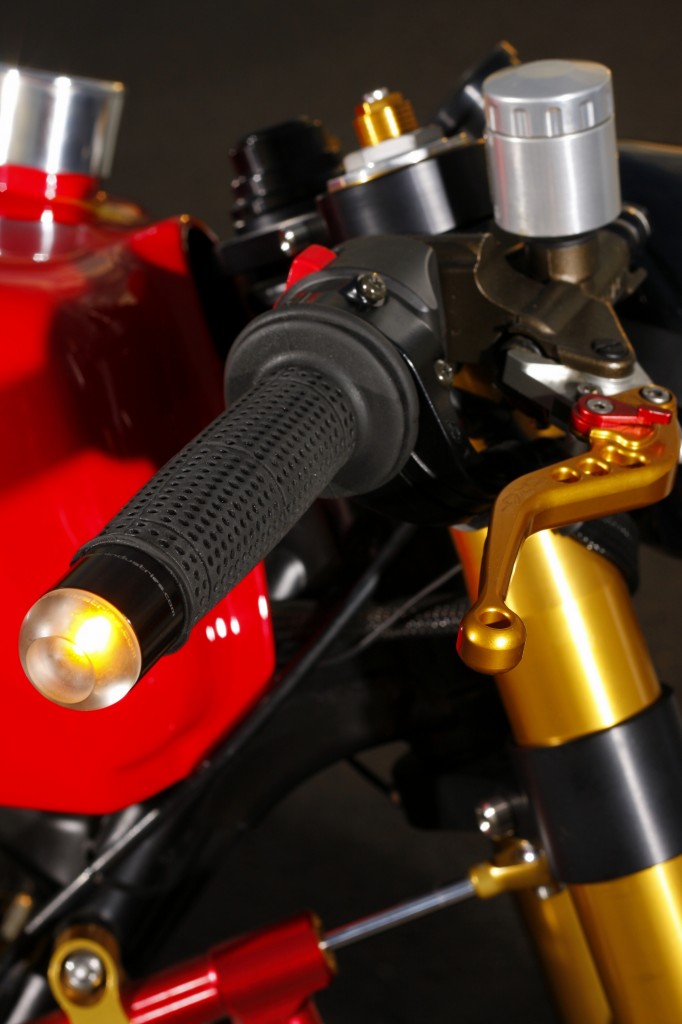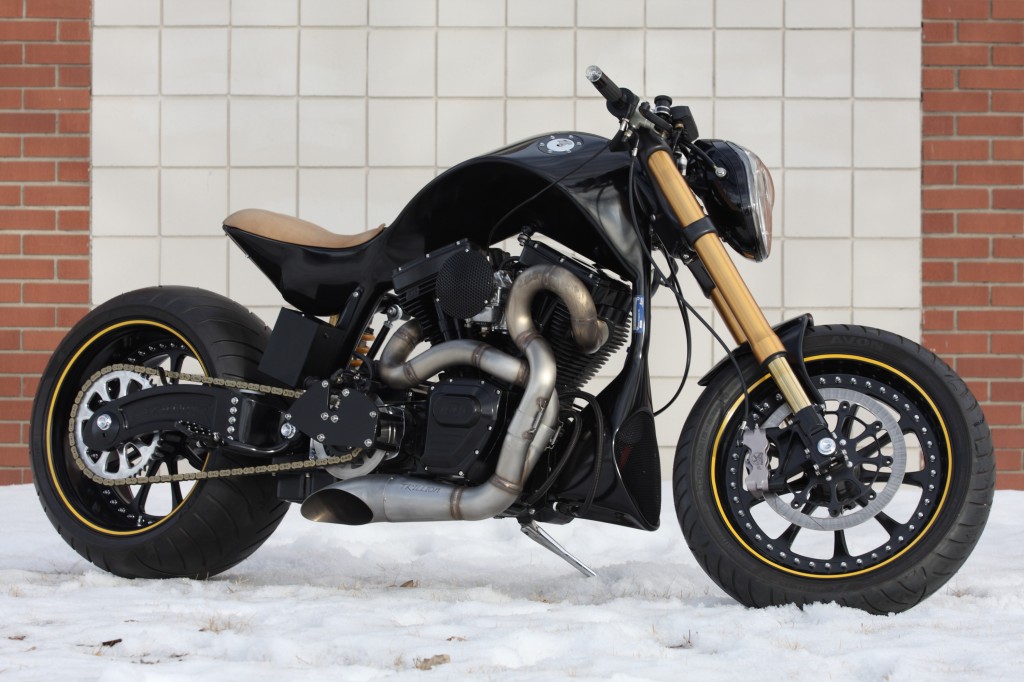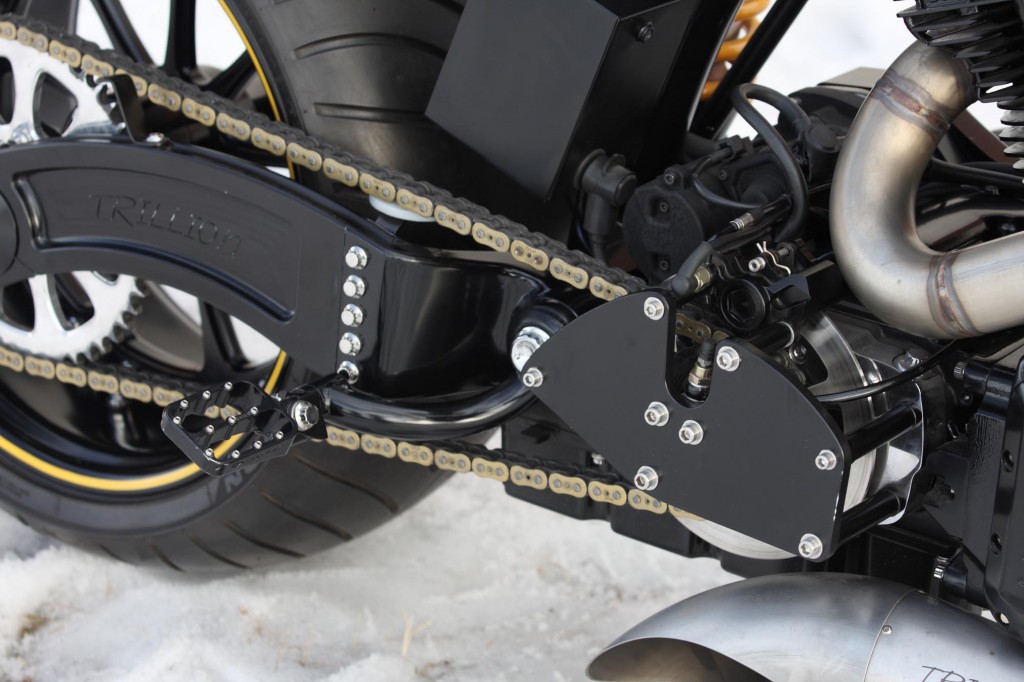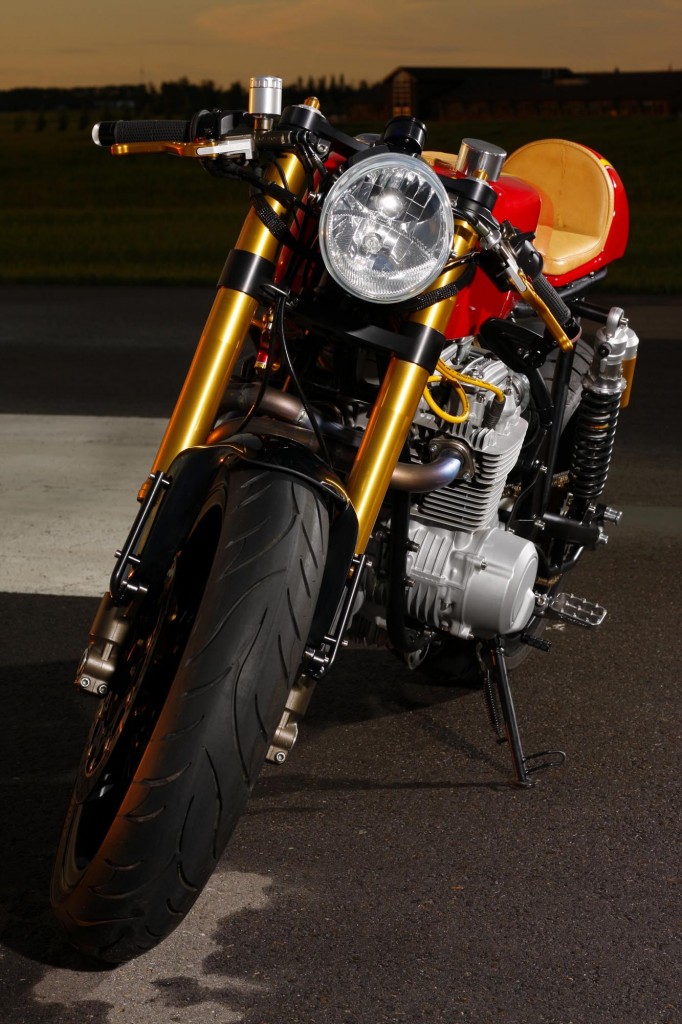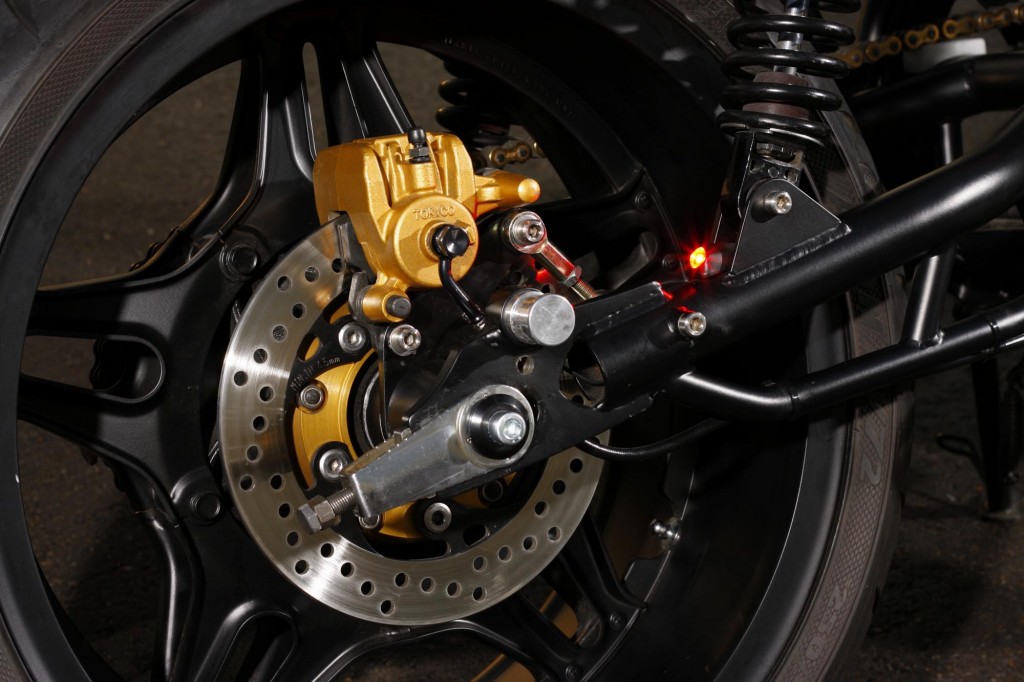Derek Pauletto: The man behind Trillion Industries
After writing the story about Derek Pauletto’s CB650 (which first ran in Motorcycle Classics magazine) it seems there’s a bit of momentum behind the builder. His work was featured on Pipeburn’s blog, and I thought it might be appropriate to post a recent Q&A with the man who operates Trillion Industries. Pauletto’s Trillion Industries is based in Calgary, Alberta, and the Q&A was written for the Calgary Herald’s Driving section as an introduction to the 2012 Calgary Motorcycle Show.
Derek P. of Trillion Industries with his 1979 Honda CB650. All photos courtesy Spindrift Photography.
Q: Did you grow up in Calgary? Was there a point when you realized you were interested in working with your hands?
A: Yes, we moved to Calgary in 1978, when I was five years old. We lived in Marlborough Park, in the city’s northeast. I was born in North York, Ontario but work brought my family west, and I’ve been here ever since.
My parents have Super 8 movies of me when I was four years old using a wood saw. My dad was in construction, and I loved to work with wood. I built my own toys, Star Wars Snow Walkers, airplanes, but mostly things with wheels. I was never satisfied with things unless they were perfect, and when I built with Lego, the most fun was building. I’d usually take it apart right after putting it together.
Q: What do you remember as a pivotal creative event in your life?
A: Shop class in junior high school. Our garage consisted of minimal tools — a vice, a hammer and a saw. Then I came to a place where I could release all of my ideas. Having access to tools was pivotal, without tools you can’t do much. You can use a rock as a hammer, but that only gets you so far.
Q:. What encouraged you to trade wood saws for a welder, and how old were you when you did that?
A: I took my first year apprenticeship as a cabinetmaker through high school, but when I turned 18, I just started to chill out with my buddies and kind of slacked off for a couple of years. I think I was sick of woodworking, as I’d been doing it since I was five. Also, wood had been a hobby, and I was probably thinking now I have to work with wood for a living.
I was working in an auto upholstery shop when I was trying to find myself, and they had a little welding machine. They told me I couldn’t use it, so I took a SAIT night course in welding. That opened my eyes. After that, I was allowed to use the welder in the shop. Then, I crashed my motorcycle and a friend told about a specialty welding shop where I could take the aluminum parts to get them fixed. I took the parts and also gave them my resume. That was on a Thursday, and was hired on the Saturday.
Q: When did you get your first motorcycle, and what kind was it?
A: I was 18, and I bought a 1988 Suzuki 600 Katana. Previously, motorcycles figured a bit in my life, but I was getting into muscle cars with a 1968 Cougar. Friends had motorcycles, and it was in high school when I twigged to bikes.
1979 Honda CB650. Trillion bar-end signals, Kawasaki ZX-636 inverted forks with custom machined triple clamp.
Q: What was the first motorcycle that you customized? Was it done out of necessity (was the bike missing parts that you had to make)?
A: Probably my 1988 Honda Hawk GT. I bought it from a friend, and it was in pieces in three boxes. I had to make my radiator from a Honda CRX car rad. It was $500 for a new one and I’m making $8 an hour, the math didn’t add up. I repaired the tank, and made my own fork components. This was in 1995 and 1996, working at my new job.
Custom-built v-twin project, Rovad.
Q: You built Rovad (a complete, frame up project) for a local client right after you branched out on your own with Trillion Industries; how important was it to have as much freedom as you did on that project?
A: I was grateful for that freedom. The customer had some pictures, and he wanted a big rear tire, a big engine, and he wanted it black. He didn’t want a chopper, but something a little more sporty. I literally drew up some rough sketches, and he said go with it. He encouraged me to just do it. I really was lucky for the opportunity to do what I wanted. Most of Rovad’s components are ideas of mine that, over the years, I could never do. For example, the billet rear swingarm.
Rovad swingarm, designed and built by Trillion Industries.
Previously, I had been in a phase where everything was welded, but I was learning that you can bolt things together and still be a welder. There was more to it than just being a welder, there are all kinds of ways to fasten stuff together. Welds are nice, but in certain places welds look kind of chunky.
Rovad allowed me to combine the machining world with the welding world, and I learned the possibilities are endless.
Q: You’ve moved on to build custom British-based machines; isn’t that ancient technology, or is that motorcycle history important to you?
A: Calgary’s Bob Klassen was a big influence, as I was working on his British motorcycle stuff. I just got a twitch, the technology was just so simple and everything I was doing was more complicated. I built a supercharged Triumph custom, and created my own rear frame and front girder fork. It was simpler technology, and I got to chill out a bit.
It’s getting harder and harder to do something completely different; there are a lot of paths, and I just took a different one.
Q: How much riding do you get to do? Or, is the actual construction process what you enjoy the most?
A: I definitely enjoy the construction process. This year, I didn’t get to ride very much at all. Work is just busy, and being a family man, I’m not there enough for my wife and kids as it is. I do want to slow down a little more, and I’ve got some projects finished now that I can ride anytime. I don’t ride enough because I’m building my own bikes. Work comes first, and then the personal stuff gets fit in. Leading up to the motorcycle show, I’ve been working seven days a week for more than a month.
Q: One of your current projects is the construction of a fuel-injected Triumph motorcycle to compete on the Bonneville Salt Flats – can you provide some details on that machine?
A: It’s a 1970 Triumph 650 engine, with a 1971 Bonneville head. I had a scrap 1970 Triumph frame that was butchered pretty bad, and I will modify the front hoop, build a hardtail, and run a conventional Triumph front end. The bike will be lower, sitting 3.5” off the ground.
I’ve always had (going to Bonneville) in the back of my mind. Ten years ago I’d heard about it from mostly car guys (for whom) I helped make parts. And then, Roger Goldammer built a land speed racer on an episode of Biker Build-Off, and I thought that was pretty cool. We went to Wendover, Nevada in April, 2011, and took a Bonneville Salt Flats tour, and then we went down to see BUB Speed Week in August. We watched the races for a couple of days, and I asked all kinds of questions. We plan to enter the Modified 650 Pushrod Supercharged class.
Q: What inspires you to get up each morning?
A: Coming to work and starting on projects gets me excited. And I get excited about learning. I get to see my family every morning, and I’m always looking forward to holidays. Every day is one step, and always one step forward.
Honda CB650, above and below.

